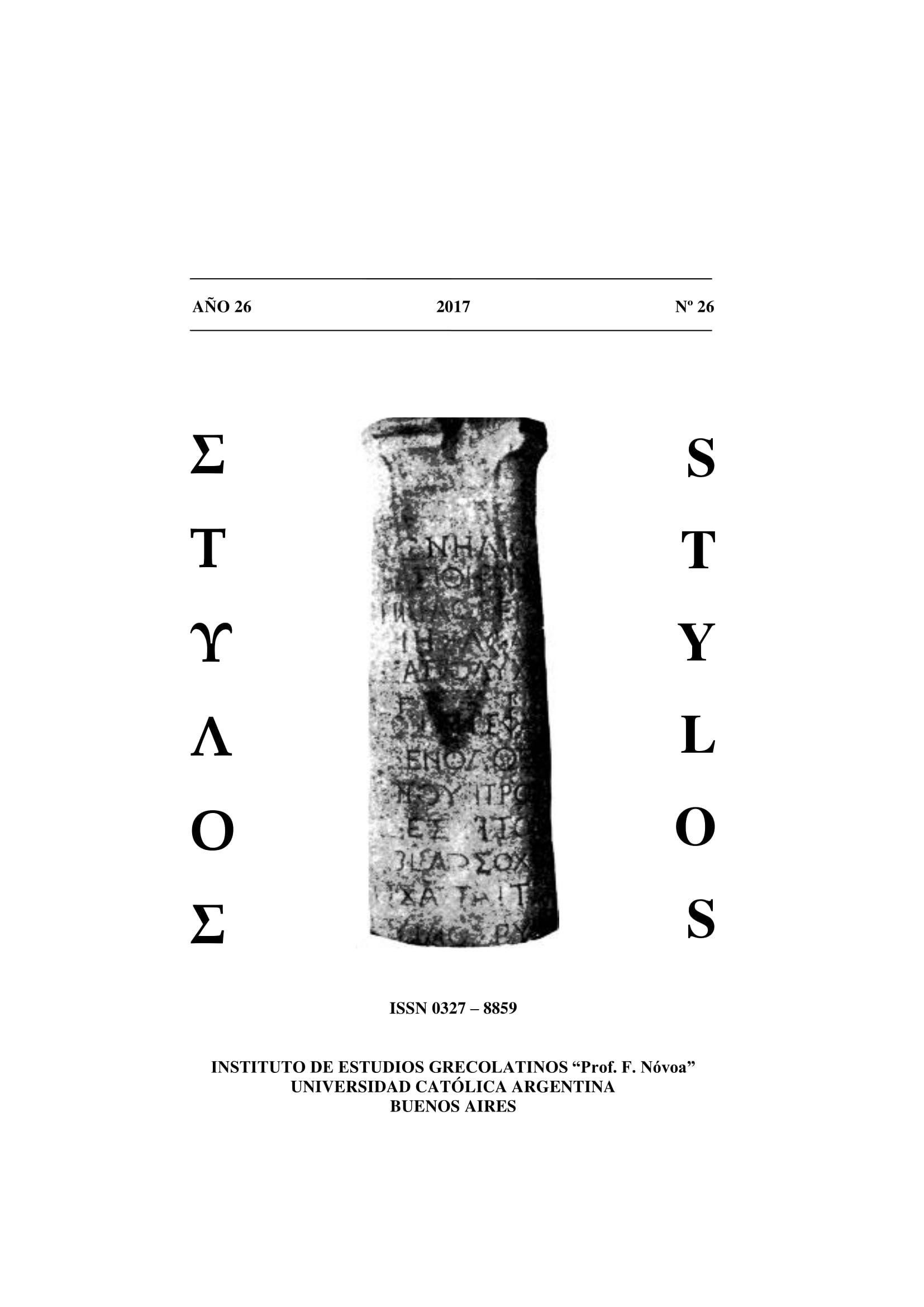“TALES SON SUS ENCANTOS” (TROYANAS 893): HELENA EN HOMERO Y TROYANAS DE EURÍPIDES
Keywords:
Helena – Homero – Euripides – ambiguity - rhetoricAbstract
The paper proposes to analyze the figure of Helen in the Homeric poems and in The Trojan Women of Euripides. In the Iliad is a personage who is spoken in numerous passages, but is shown in person only in six of them as a suffering being who insults himself for the evils that have occurred. In the Odyssey she is an excellent hostess, but the speech of Menelaus reveals its deceitful and ambiguous character. In both poems the figure of Helena is associated with the subject of its responsibility with respect to the war of Troy: is it responsible or falls to the gods the numerous deaths of Achaians and Trojans? Euripides raises this question in its The Trojan Women tragedy that shows Helen confronted in an agon with Hecuba. The tragic poet takes the Homeric source and endows both characters with a rhetorical ability, more characteristic of fifth-century Athens than of the Homeric Trojan.Downloads
References
DICCIONARIOS
BAILLY, A (1950) Dicctionnaire grec-francais, Paris, Hachette.
LIDDELL, HENRY AND SCOTT, ROBERT (1968) Greek-english Lexicon, Ox-ford University Press.
EDICIONES
Euripides Trojan Women (1986), S. Barlow (ed.) Warminster, England, Aris & Phillips.
Euripidis Fabulae (1981), J. Diggle, (ed), Oxford University Press.
Homère Odysée (1875), Batrachomyomachie, Hymnes, Epigrammes,. A.Pierron (ed) . Paris, Hachette.
Homeri opera (1938-9) D.Monro-T.Allen (eds.), Oxonii, Clarendoniano, 1938-9.
The Iliad vol. I (1960), W. Leaf (ed). Amsterdam, Adolf Hakkert Publis-hing.
BIBLIOGRAFÍA
ANDRADE, N. (2003) “Discurso político en el Áyax de Sófocles”, en Discurso y poder en la tragedia e historiografía griegas, Buenos Aires, Eudeba, pp. 13-40.
BALLABRIGA, A. (1998) Les fictions d´ Homère, Paris, Presses Universi-taires de France.
BLONDELL, R. (2010) “Bitch that I am”. Self- Blame and Self-Assertion in the Iliad”, TAPhA 140/1, pp. 1-32.
CAVALLERO, P. (2014), Leer a Homero, Ilíada, Odisea y la mitología griega, CABA, Editorial Quadrata.
CHANTRAINE, P. (1999) Dictionnaire étymologique de la langue grecque, Paris, Klincksieck.
DODDS, E. R. (1981) Los griegos y lo irracional, Madrid, Alianza Edi-torial.
GALLEGO, J. (2005-2006) “Los dissoi logoi en las Nubes de Aristófanes”. Esquema formal y punto de detención de la proliferación discusiva”, Circe 10; pp. 177-93.
GILMARTIN, K (1970) “Talthybius in the Trojan Women” AJPh 91/1, pp. 213-22.
LLOYD, M. (1984) “The Helen Scene in Euripides´ Troades”, CQ 34/2, pp. 303-13.
MERIDOR, R. (2000) “Creative Rhetoric in Euripides´ Troades: Some notes in Hecuba´s Speech”, CQ 50/1, pp. 16-29.
O´NEILL E. (1941) “The Prologue of the Troades of Euripides”, TAPhA 72, pp. 288-322.
PERELMAN, CH. Y OLBRECHTS-TYTECA, L. (1994) Tratado de la argumentación, Madrid, Editorial Gredos.
PLÁCIDO, D. (1997) La sociedad ateniense, Barcelona, Editorial Crítica.
ROISMAN, H. M. (2006) “Helen in the Iliad “causa belli” and Victim of War: from Silent Weaver to Public Speaker”, AJPh 127/1, pp. 1-36.
SAMMONS, B. “Likely Story: Narrative and Probability in Euripides´ Troades” en classicalstudies.org/annual-meeting/147/abstract/likely-story-narrative-and-probability-euripides’-troadesy.
SCHMIEL, R. (1972) “Telemachus in Sparta” TAPha 103, pp. 463-72.
VERNANT, J. P Y VIDAL-NAQUET (1987) Mito y tragedia en la Grecia antigua I, Madrid, Taurus
ZECCHIN DE FASSANO, G. (2004) ODISEA: Discurso y narrativa, La Plata, EDULP.
Downloads
Published
How to Cite
Issue
Section
License






